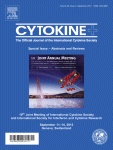2025-12-12
东瀛万事通・今日头条・中文導報・日本东方新报:北海道中国会举办第十二届总会&恳亲忘年会
2025-11-06
2025年北海道华侨华人春节联欢会盛大举行
2025-08-25
2025年“札幌中国节”成功举行 彩绘水墨画惊艳北海道 美声颂歌回响红砖广场
2025-07-31
陶永芳:我是世上最幸福的老人
2025-07-30
陶永芳:回想在日本住院的那些日子
2025-07-16
第2届全日本华侨华人业余高尔夫锦标赛&第11届北海道中国会杯高尔夫大会成功举行
2025-07-02
第60届中国人殉难者全道慰灵祭在北海道仁木町民中心举行
2024-12-16
肿瘤整合治疗联盟:第二届肿瘤整合治疗学术研讨会成功举办
2025-06-14
汗,是脾胃的镜子
2025-05-22
教你如何区分阴虚和阳虚,一学就会!
2025-02-24
艾灸最怕这一个字!90%的人做错,这样灸比吃补品更有效
2025-02-23
这些常见中药搭配,用对效果加倍
2025-02-02
中医和西医在治病原则区别
2025-02-01
李可老中医的一句话,拯救了无数肿瘤患者!
2025-01-26
仝小林院士:体病药论与治未病
2025-01-11
从五运六气看六经辨证
2023-12-06
黄帝内经治未病陶氏疗法在日本临床应用25年研讨⑪
2024-12-09
放几滴血,口腔溃疡就会痊愈,不信你试试!
2024-12-03
三魂七魄,看看哪个已不在您身上?
2024-12-02
中文导报 东瀛万事通 今日头条:北海道中国会举办第十一届总会&恳亲会
2024-11-09
艾烟,到底有没有害?
2024-10-13
经络不通,补什么都没用!只用一招:经络通畅百病消!
2024-10-08
你每天这样吸收大量阴气,怎么可能不生病?
2024-10-05
中医觉醒,认识经方——读懂《伤寒论》
2024-09-23
奥运体操全能王冈慎之助助阵:DENBA Moblie新品东京发表
2024-09-21
这样刮刮痧,活到八十八
2024-09-17
王振义被授予“共和国勋章”!他曾说:用循证研究证明中医药是个“宝”
2024-09-13
浙大调查发现:喜欢锻炼的人,患脑梗概率比久坐不动的人高数倍?
2024-09-04
“2024札幌中国节”成功举行 :彩绘水墨画惊艳北海道
2024-09-02
灸12原穴,断全身百病
1
Down-regulatory effect of Pairogen, a health drink, on inflammatory response to Rhodococcus aurantiacus infection in mice
M. Yi1, H. Tao2(陶 恵栄), M. Kohanawa1, S. Zhao3, Y. Kuge4, N. Tamaki5
1 Department of Advanced Medicine, Graduate School of Medicine, Hokkaido University, Japan
2 Tao Clinic, Japan(陶氏診療院)
3 Department of Tracer Kinetics & Bioanalysis, Graduate School of Medicine, Hokkaido University, Japan
4 Central Institute of Isotope Science, Hokkaido University, Japan
5 Department of Nuclear Medicine, Graduate School of Medicine, Hokkaido University, Sapporo, Japan
Available online 14 August 2012
Introduction
The health drink Pairogen mainly consists of ferrous ferric chloride (FFC) water that appears to perform multiple biological functions by regulating intracellular redox reactions in living organisms (1). With respect to its contribution to host defense, FFC water reportedly protects plant against fungal infection (2). However, little is known regarding the capability of FFC water and Pairogen to regulate the defense mechanisms in animals or humans in order to respond properly to pathogenic organisms. Herein, we investigated whether Pairogen regulates inflammatory response to Rhodococcus aurantiacus (R. aurantiacus) infection in mice.
Methods
We assessed survival, organ bacterial load, and inflammation (cytokine production and histomorphological changes) in Pairogen-treated mice (F0) and first-generation mice (F1) following infection. Cytokine response to heat-killed R. aurantiacus was further explored in the peritoneal macrophages of Pairogen-treated F1 mice.
Results
Longitudinal ingestion of Pairogen improved survival of infected mice in a concentration-dependent manner. Rapid elimination of bacteria from the organs (such as livers and spleens), accompanied by decreased production of tumor necrosis factor-alpha and interleukin-6 and elevated release of interleukin-10, was observed in F0 mice treated with 10-fold-diluted Pairogen. Histological studies also exhibited a significant reduction in granuloma number and size as well as amelioration in the oxidative status in mouse livers at day 14 following infection. The effects of Pairogen were further pronounced in F1 mice treated with 10-fold-diluted Pairogen. Stimulating the peritoneal macrophages from these mice with heat-killed R. aurantiacus induced the production of three cytokines similar to those detected in vivo, whereas gene expression of these cytokines was down-regulated, suggesting an inhibitory role of Pairogen in cytokine expression and the mutual antagonistic relationship among the cytokines.
Conclusion
The present study reveals that longitudinal ingestion of Pairogen improves survival, accelerates bacterial clearance and suppresses the over-expression of inflammation-related cytokines by regulating cellular redox reactions, and consequently results in depression of granulomatous inflammation in R. aurantiacus-infected mice. Moreover, these effects of Pairogen were enhanced in their offspring when they continued to ingest Pairogen. Pairogen is thought to be a useful redox regulator that contributes to the regulation of inflammatory and immune responses. It may also be expected to improve the quality of human life by heightening the defense functions against infection.
http://www.sciencedirect.com/science/article/pii/S1043466612003481
1 Department of Advanced Medicine, Graduate School of Medicine, Hokkaido University, Japan
2 Tao Clinic, Japan(陶氏診療院)
3 Department of Tracer Kinetics & Bioanalysis, Graduate School of Medicine, Hokkaido University, Japan
4 Central Institute of Isotope Science, Hokkaido University, Japan
5 Department of Nuclear Medicine, Graduate School of Medicine, Hokkaido University, Sapporo, Japan
Available online 14 August 2012
Introduction
The health drink Pairogen mainly consists of ferrous ferric chloride (FFC) water that appears to perform multiple biological functions by regulating intracellular redox reactions in living organisms (1). With respect to its contribution to host defense, FFC water reportedly protects plant against fungal infection (2). However, little is known regarding the capability of FFC water and Pairogen to regulate the defense mechanisms in animals or humans in order to respond properly to pathogenic organisms. Herein, we investigated whether Pairogen regulates inflammatory response to Rhodococcus aurantiacus (R. aurantiacus) infection in mice.
Methods
We assessed survival, organ bacterial load, and inflammation (cytokine production and histomorphological changes) in Pairogen-treated mice (F0) and first-generation mice (F1) following infection. Cytokine response to heat-killed R. aurantiacus was further explored in the peritoneal macrophages of Pairogen-treated F1 mice.
Results
Longitudinal ingestion of Pairogen improved survival of infected mice in a concentration-dependent manner. Rapid elimination of bacteria from the organs (such as livers and spleens), accompanied by decreased production of tumor necrosis factor-alpha and interleukin-6 and elevated release of interleukin-10, was observed in F0 mice treated with 10-fold-diluted Pairogen. Histological studies also exhibited a significant reduction in granuloma number and size as well as amelioration in the oxidative status in mouse livers at day 14 following infection. The effects of Pairogen were further pronounced in F1 mice treated with 10-fold-diluted Pairogen. Stimulating the peritoneal macrophages from these mice with heat-killed R. aurantiacus induced the production of three cytokines similar to those detected in vivo, whereas gene expression of these cytokines was down-regulated, suggesting an inhibitory role of Pairogen in cytokine expression and the mutual antagonistic relationship among the cytokines.
Conclusion
The present study reveals that longitudinal ingestion of Pairogen improves survival, accelerates bacterial clearance and suppresses the over-expression of inflammation-related cytokines by regulating cellular redox reactions, and consequently results in depression of granulomatous inflammation in R. aurantiacus-infected mice. Moreover, these effects of Pairogen were enhanced in their offspring when they continued to ingest Pairogen. Pairogen is thought to be a useful redox regulator that contributes to the regulation of inflammatory and immune responses. It may also be expected to improve the quality of human life by heightening the defense functions against infection.
http://www.sciencedirect.com/science/article/pii/S1043466612003481









